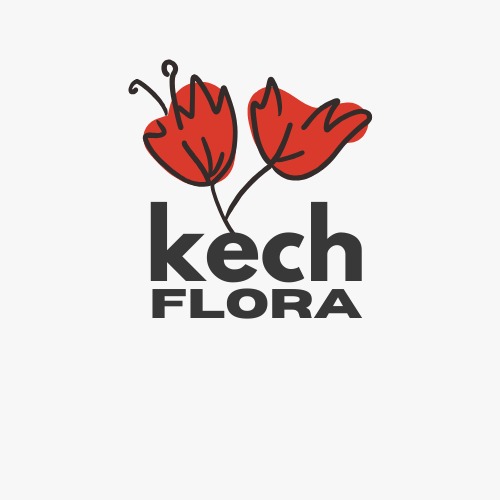The Enigmatic Bloom: Discovering Morocco's Seasonal Flowers in Full Flourish
- Kech Flora
- May 30
- 4 min read
Morocco is truly a treasure trove for flower lovers. This vibrant country, with its diverse landscapes and rich culture, comes alive with color and fragrance as each season shifts. From spring to summer, nature offers a spectacular show of blossoms. If you are eager to discover the enchanting flowers that flourish in this beautiful land, let this guide unveil the seasonal gems that you can experience, along with the best places to enjoy their beauty.
Spring Blooms: A Symphony of Color
As winter fades, spring heralds a stunning transformation across Morocco. The sun-kissed landscapes embrace a colorful array of flowers that thrive in the warmth.
One highlight of this season is the Bougainvillea. Known for its hot pink, purple, and magenta hues, this flower decorates walls and fences, turning spaces in cities like Marrakech and Essaouira into vibrant scenes. Bougainvillea thrives well in sunny areas, showcasing its brilliance against the historic backdrops of these cities.
Another beautiful spring flower is the Moroccan Mallow (Malva sylvestris). With its soft lavender petals, you can find this resilient bloom often in rural gardens and fields. Apart from enhancing the landscape’s beauty, the Moroccan Mallow has been used for centuries for its medicinal properties. For instance, it is known to aid digestion and soothe inflammatory conditions.

As these vibrant flowers emerge, spring in Morocco becomes a delightful time when locals and visitors alike take moments to appreciate nature's wonders.
The Delicate Fragrance of Jasmine
As spring transitions into early summer, Moroccan gardens are adorned with the cherished Jasmine flower. Known for its captivating fragrance, Jasmine fills gardens and homes, symbolizing love and purity.
In cities such as Fes and Meknes, the sweet scent of Jasmine wafts through the air, inviting visitors to relax in shaded courtyards surrounded by flowering vines. Jasmine's delicate white blossoms make it a popular choice for weddings and special occasions, showcasing its cultural significance.

Walking through the narrow streets of the old Medina at dusk amplifies the aroma of Jasmine, creating an enchanting experience that connects the scent to the historical ambiance of these vibrant cities.
The Bright Colors of Poppies and Larkspur
With the arrival of summer, flowers like Poppies and Larkspur take the spotlight. Their bold colors create stunning landscapes, especially in the countryside surrounding the Dades Valley and the Atlas Mountains.
Poppies, dressed in bright reds, yellows, and oranges, blanket the fields, painting an iconic picture of rural Morocco. According to local estimates, certain valleys can host up to 100,000 poppies per hectare during peak bloom, making them a visual feast that attracts artists and photographers hoping to capture their beauty.
On the other hand, Larkspur offers a graceful height with its tall spikes of blue or purple flowers, creating a charming presence in gardens and meadows. Their striking appearance brings a touch of elegance to the summer palette.

These seasonal flowers go beyond aesthetics. They inspire creativity and evoke a deep appreciation for nature among all who witness them.
Seasonal Challenges and Conservation
Despite the beauty of these flowers, environmental challenges threaten their existence. Climate change, urban expansion, and unsustainable farming practices can harm Morocco's floral diversity.
Awareness of conservation efforts is crucial. Local projects that focus on preserving native plant species and promoting sustainable gardening practices are vital for protecting Morocco's unique flora. For example, community gardens are becoming more common, highlighting the need for cooperation and education about the importance of safeguarding these natural treasures.
Where to Experience Morocco's Floral Wonderland
If you plan to explore Morocco during the blooming season, consider visiting these must-see locations to fully enjoy the nation's floral wonders.
Marrakech: Known as the "Red City," Marrakech is home to beautifully landscaped spots like the Majorelle Garden, where exotic plants mix with seasonal flowers in a riot of color.
Fes: Wander through the historical gardens of Fes, where Jasmine and other seasonal blooms thrive alongside ancient architecture.
Dades Valley: Venture to Dades Valley in spring to find expansive fields of Poppies and Larkspur that create a colorful tapestry stretching across the horizon.
Essaouira: Admire the Bougainvillea that lines the coastal walls of this charming port town, adding a vibrant splash against the backdrop of the Atlantic Ocean.
A Journey Through Morocco's Floral Tapestry
Morocco’s seasonal flowers showcase the beauty of nature, telling stories about their environment and local culture. From the iconic Bougainvillea to the fragrant Jasmine and charming Poppies, these blooms provide a captivating glimpse into Moroccan life.
As you prepare for your journey to this amazing land, take the time to explore and appreciate the diversity of its flowers. Whether you roam through ancient cities or stroll across vast fields, Morocco’s enchanting seasonal flowers are sure to leave lasting memories, inviting you back time and again.
The combination of rich cultural significance and vibrant flowers transforms Morocco into not just a visual delight, but a deep source of experiences that nourish the soul. Embrace the alluring charm of Morocco's blooms; they are waiting for your discovery!



